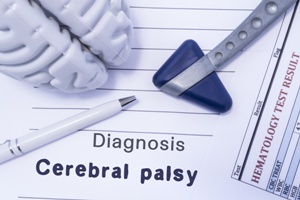 Cerebral palsy is caused by abnormal development of the brain or damage to the developing brain that impacts the sufferer’s movement, balance, and posture. However, there is not just one type of cerebral palsy. Instead, there are several types of cerebral palsy that impact people in different ways.
Cerebral palsy is caused by abnormal development of the brain or damage to the developing brain that impacts the sufferer’s movement, balance, and posture. However, there is not just one type of cerebral palsy. Instead, there are several types of cerebral palsy that impact people in different ways.
The most common form of cerebral palsy is spastic cerebral palsy. Approximately 80% of people with cerebral palsy are diagnosed with spastic cerebral palsy.
Three Types of Spastic Cerebral Palsy
Everyone with spastic cerebral palsy has stiff muscles due to increased muscle tone. However, the condition is further categorized based on the parts of the body affected by the condition. The three types of spastic cerebral palsy include:
- Spastic diplegia or diparesis. This type of spastic cerebral palsy primarily impacts the legs, although symptoms may also appear in the arms. People with spastic diplegia or diparesis often have trouble walking because tight hip and leg muscles cause their legs to pull together and turn inward.
- Spastic hemiplegia or hemiparesis. This condition only impacts one side of a person’s body. While both the arm and leg may be affected, it is typically the arm that is more severely impacted.
- Spastic quadriplegia or quadriparesis. This is the most serious form of spastic cerebral palsy. It impacts both arms, both legs, the torso, and the face. People with spastic quadriplegia or quadriparesis may be unable to walk and may have other disabilities.
Spastic Cerebral Palsy Symptoms and Diagnosis
Early signs of spastic cerebral palsy include stiff or jerky movements. Young children may not meet developmental milestones such as crawling or walking.
While there is no single test for cerebral palsy, your child’s doctor may rely on different observations and a variety of tests to make a definitive diagnosis of spastic cerebral palsy. Specifically, your child’s doctor may consider your child’s:
- Development
- Movement and reflexes
- Muscle tone
- Brain MRI, CT scan, ultrasound or EEG
- EMG to test for muscle weakness
- Tests to rule out other medical conditions
Once your child’s doctor diagnoses spastic cerebral palsy, it is time to talk about the next steps.
Spastic Cerebral Palsy Treatment
Currently, there is no cure for cerebral palsy. However, early and ongoing treatments can help. Depending on the specific nature of your child’s condition, your child’s treatment may come from a team of professionals and may include:
- Physical therapy
- Occupational therapy
- Leg braces
- Wheelchair or walker
- Medicine to treat pain or stiffness
- Surgery
All of these treatments can be expensive, and it is important to consider all possible compensation if your child suffered cerebral palsy because of a birth injury.
What to Do If Your Child Has Spastic Cerebral Palsy
Our experienced birth injury lawyers and law firm nurse can thoroughly review what happened during labor and delivery to determine if a birth injury may have caused your child’s cerebral palsy. If your child was deprived of oxygen and suffered a brain injury, cerebral palsy may result, and your child may be entitled to financial compensation for past, current, and future:
- Medical expenses including rehabilitation therapies, surgeries, medical appointments, medications, and medical devices
- Lost income if your child is unlikely to be self-supporting in the future because of spastic cerebral palsy
- Out-of-pocket expenses for any costs you’ve incurred due to your child’s medical condition
- Physical pain and emotional suffering which may be the most difficult damages to prove, but is an important part of your child’s recovery.
Your child is too young to bring a legal case independently. Instead, your child depends on you to protect his legal rights. You can do that today by contacting Gray and White Law for a free, no-obligation consultation. We will provide you with the individual attention your child deserves and we will fight hard to make sure that your child’s current and future needs are met. Call us or fill out our online contact form to learn more.
Related Links: